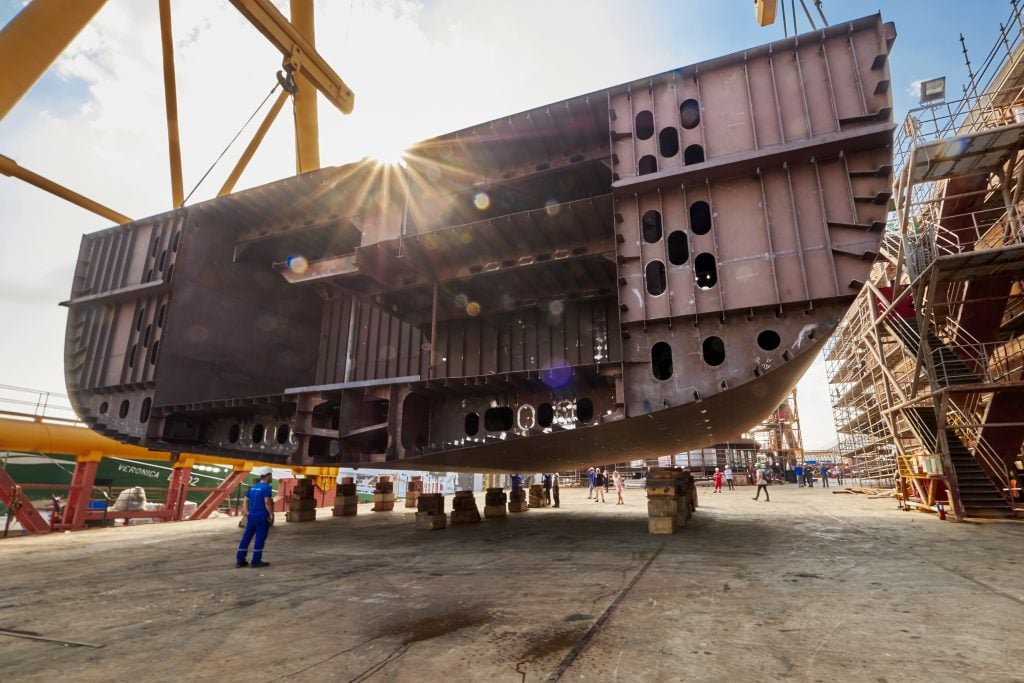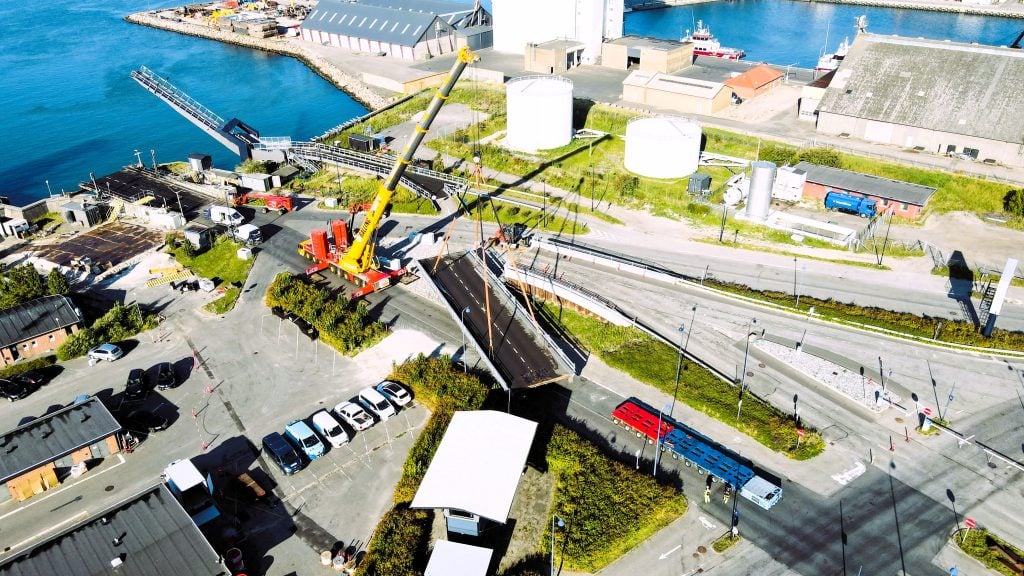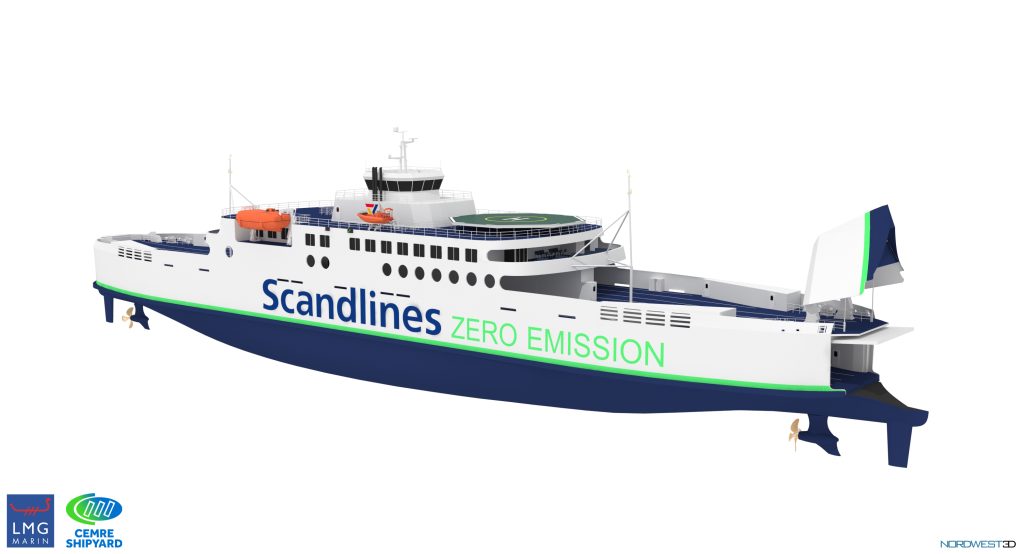Fast reading:
- The new ferry – which will have zero direct emissions – requires 25% less energy to operate relative to the company’s existing fleet on its planned route.
- The vessel requires a 10 MWh lithium-ion battery system for storing and discharging power, which can be recharged in 12 minutes.
- Federated Hermes, as one of three shareholders in the business, worked closely with Scandlines to ratify and test the investment case for project.
The global ferry industry – both passenger and freight – has seen a steady rise in demand over the last few years1. However, any efforts to expand capacity also present a conundrum as companies across the maritime transport industry seek to reduce their carbon footprint.
In 2021, Nordic ferry group Scandlines – which is co-owned by Federated Hermes – was looking to increasing the size of its fleet by acquiring second-hand tonnage ships. But the group was unable to source vessels with the right specifications or environmental profile. Scandlines operates one of the world’s largest diesel-electric hybrid fleets, and launched its first hybrid ferry in 20132.
The group embarked on an innovative solution and two years on it is completing the construction of one of the world’s first electric freight ferries. The new ferry (PR24) will produce zero direct emissions and is due to begin operating on the busy sea corridor between Puttgarden in Germany and Rødby in Denmark in H2 2024.

PR24 requires 25% less energy to operate relative to the company’s existing fleet on the route. It boasts the world’s largest battery bank to date and can be recharged in 12 minutes. With a capacity of 66 freight units, PR24 will boost the current capacity on the route by up to 23%, helping to meet the rising demand for freight services.
“We have a history of pioneering green innovation across the industry,” says Michael Guldmann Petersen, Chief Operating Officer of Scandlines. “We already operate the world’s largest hybrid fleet, and the corresponding technologies that we brought to the market have been taken up by many other operators.
“The hybrid systems we pioneered in 2013 represented a quantum leap in green ferry operations at the time, and we are proud to be leading the next phase of the industry’s transition towards a zero-emissions future.”
Climate-neutral shipping
The construction of the vessel marks a turning point for the shipping industry, paving the way for climate-neutral shipping. “This development is proof that even larger ships can sail completely without greenhouse gas and air pollutant emissions today,” says Sönke Diesener, a shipping expert at the German Nature And Biodiversity Conservation Union.
Scandlines and the Cemre shipyard in Turkey – which was contracted to build the vessel – drew on cutting-edge technology to help overcome some of the complexities that accompany such an ambitious project.
Infrastructure
As widely seen in the automobile space, building the infrastructure to support electrification and charging needs is a significant challenge for green transport. Scandlines has invested in the necessary infrastructure; the charging facilities in Rødby are already under construction and an installation in Puttgarden will follow.
Carbon calculations
Any emissions claim must be backed up by independent data that factors in the many elements of a project’s supply chain and all stages of the life cycle.
Scandlines has teamed up with ReFlow, independent emissions analysts, to help calculate the carbon footprint of the project and ensure its operations and maintenance are as carbon efficient as possible.
3D modelling
The latest 3D modelling technology was also used to enable Scandlines and Cemre to digitally recreate and move around the vessel to inform the construction process and telegraph challenges.
Battery system
One of the most innovative areas of the ship is the battery technology. The vessel requires a high-efficiency battery system for storing and discharging power. The technology selected for the PR24 project is among the safest and most advanced maritime battery system in the world. With a capacity of 10 MWh, it will be the largest lithium-ion battery installation on a ferry to date, and capable of fully charging with green power within just 12 minutes.
These innovations are helping to set a new standard for sustainability in the industry, Guldmann Petersen says, adding that Scandlines has already earmarked the technology for use in other segments of its business.

Federated Hermes’ role
Federated Hermes, as one of three shareholders in the business, worked closely with the Scandlines executive team to ratify and test the investment case for PR24.
Scandlines is a key holding within the infrastructure portfolio and the team at Federated Hermes was committed to ensuring the needs of investors remained at the core of the decision to build the vessel. Collectively both shareholders and leadership worked together to ensure the project was in keeping with the company’s overall strategic objectives and sustainability goals.
“We provided input and oversight of the process, and asked the questions pertinent to the needs of our investors. After analysing the opportunity and carrying out due diligence in partnership with the Scandlines executive team, we endorsed the project on the strength of its commercial viability and long-term investment potential,” says Desmond Wilkins, Federated Hermes Infrastructure’s Investment Management lead for Scandlines, who sits on the company’s board.
This development is proof that even larger ships can sail completely without greenhouse gas and air pollutant emissions today
“Alongside the additional capacity that the new vessel provides, its ability to significantly reduce emissions, and the technology it draws on to achieve this, makes PR24 an important investment for the business and its investors, the industry and the environment,” he adds.
Federated Hermes Infrastructure seeks to lead the industry in the application of sustainable investment principles to the management of infrastructure assets.
As the shareholder member of the now superseded ESG working group, Federated Hermes provided key input into the development of Scandlines’ first public-facing sustainability report in 2021. Published annually, the document is in line with the industry’s highest global reporting standards, and marked a significant step forward for the shipping group’s long-term sustainability agenda.
Subsequently, Federated Hermes played a key role in establishing a full Safety and Sustainability Committee, including drafting the terms of reference, and which it now chairs. Alongside the annual report, the committee provides oversight of and input into Scandlines’ broader sustainability strategy and initiatives.

The road ahead
Looking ahead, Scandlines is focused on achieving zero-emissions operations on the Puttgarden-Rødby route by 2030 and zero-emissions operations across its entire business by 2040. This ambition puts the company a decade ahead of the targets set by the Paris Agreement3.
“We are excited by the pace of growth in the company and proud to be part of redefining the role that ferry travel is playing in the global green agenda,” Guldmann Petersen adds.
For more information on Federated Hermes Infrastructure capabilities, please click here.
1 Economic impact of the global ferry industry – Oxford Economics
2 The world’s largest fleet of hybrid ferries | Scandlines
3 Paris Agreement: The Paris Agreement’s central aim is to strengthen the global response to the threat of climate change by keeping a global temperature rise this century well below 2° Celsius above pre-industrial levels and to pursue efforts to limit the temperature increase even further to 1.5° Celsius.







